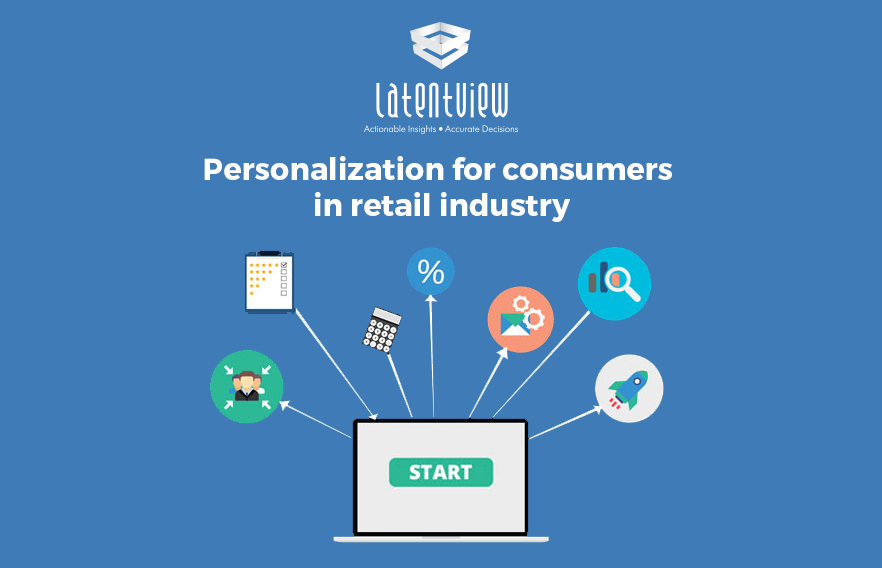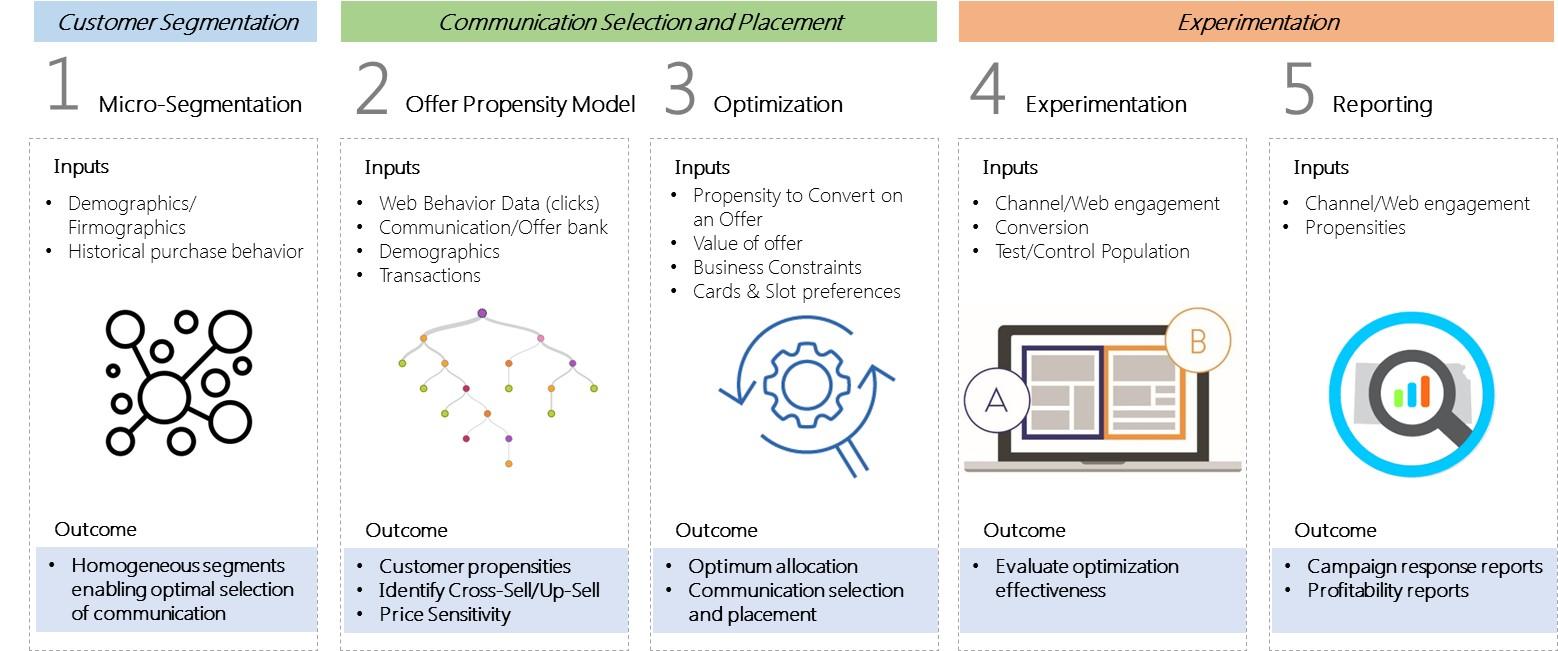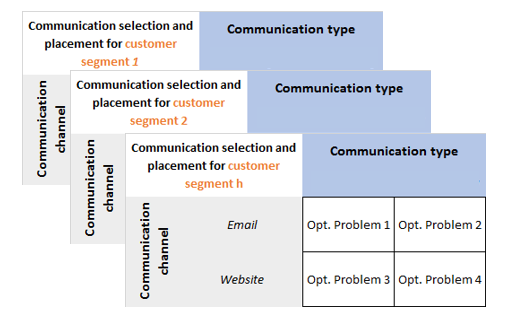In the current market scenario, customers hold the ultimate power in deciding the success of a retailer – this holds good for a new player as well as an established enterprise. Thus, the current scenario has been rightly dubbed the ‘Age of the Consumer.’ Sixty percent of marketers surveyed in a Gartner Marketing Technology Survey reported that they were planning to deploy or are already using tools for personalization or site-side optimization. Another study by Forrester titled The Power of Personalization, found that personalization is critical for marketers who want to enhance customer centricity and engagement.
Click to enlarge for full Infographic
Retailers have responded to this shift by evolving highly customer-centric strategies to improve customer experience for sales and marketing. These retail analytics strategies are not only to acquire new customers, but to retain existing ones as well. With greater thrust on attractive offers and marketing campaigns, retailers have not lost sight of the bottom line – that profitability must not only remain unaffected but must show consistent rise in the graph. The customer-centric strategy requires a personalized framework to be applied across businesses irrespective of size of the business and the products or service being offered. There are huge benefits to offering personalized communication. It can offer five to eight times the return on marketing spend and can increase sales by up to ten percent.
Personalized communication optimization in retail analytics through in-depth customer analytics has emerged as an effective strategy to deliver a better marketing experience to the consumer. It entails providing ‘customers with the right offer at the right time in the right location through the right medium.’ This prevents customers from being flooded with irrelevant offers or providing them with inadequate offers – it is important to ensure that the customer is satisfied and at the same time completes the transaction with a positive notion. This level of personalization must be carefully balanced out with the business constraints. This presents a complex challenge to retailers. An optimization framework to identify the best strategy for personalized communication can go long way in helping retailers find the right mix through marketing analytics.
Some of the benefits of a personalized optimization framework are:
- Increased return on investment (ROI)
- Improved customer satisfaction score resulting in reduced churn
- Automated offer selection that removes any manual Intervention
- Improved margins for vendors
- Increased presence of marketing across all categories
Implementation of a Personalized Communication Optimization Framework in retail analytics
The framework of personalized communication optimization in marketing analytics stands on three basic pillars
- Estimation: This involves taking into consideration your propensity of conversion at a customer level. Various response models, user and product affinity models, brand affinity models and membership models are analyzed to provide a score of conversion or propensity to convert at a customer level.
- Optimization: The optimization model runs through all combination of outcomes and provides the best overall output that satisfies business constraints and at the same time meets the goals set for the framework (for example, maximizing margin made on each customer, or maximizing conversion rate).
- Experimentation: A good model must have a set of experiments and tests carried out to find out the effectiveness of a framework and at the same time provide a feedback loop for the optimization engine to learn from the tests and experiments carried out
The three pillars work in conjunction with each other to bring a unified and personalized customer experience.
Figure 1: Three pillars of a personalized communications optimization framework
In the case of an online retailer, there are additional steps that will come into play. They include:
Customer Segmentation: The ‘one size fits all’ plan is no longer a viable option. It is important to segment customers into clusters based on similar traits and characteristics through marketing analytics. The clustering patterns are based on demographic data and historic purchase behavior. The homogeneous segments that result from such segmentation enable optimal selection of communication.
Figure 2: Additional steps for an online retailer
Communication Selection and Placement: This block consists of both the propensity models and optimization framework being considered. To enable an optimization engine to create personalization strategy, building of propensity models needs to be carried out for each customer segment using web behavioral data, impressions, and historic transactional data generated through customer analytics. The primary feature of the model is to understand intent and propensity and at the same time account for cross-sell/up-sell opportunities.
Propensity models deal with certain cases of cold start by accounting for look-alike models in case of new customers or new products/services. Uplift modelling is another alternative that has better reaction towards upsell/cross/reorder. In this case, the model understands the incremental lift obtained by carrying out a promotion or offer, and only sends out an offer if the incremental propensity is higher. Incremental probability represents the change in customer preference for a product given an offer (Probability of Conversion with offer – Probability of Conversion without offer).
Predicting customer intent through customer analytics to convert on an offer allows for effective allocation of offers as well as in identifying and nurturing high value customers and mitigating exposure to losses. Features and ensemble models can be used to predict the purchase intent and any risk elements associated with the customer can be incorporated to help create a personalized shopping experience with customer experience analytics.
Figure 3: Personalized offers based on customer segmentation
The optimization model runs through all possible combinations of customer segments and eligible offers. The selection of the offers for each customer segment is based on either maximizing or minimizing the objective function to provide the best set of offers and its placement.
Experimentation: Experimentation and testing can help stakeholders take informed decisions and evaluate various hypotheses. It is imperative for stakeholders to understand and measure the impact brought by the optimization framework and to identify the aspects that could lead to an improved performance. By having a robust experimentation framework in place, optimization engine can be fine-tuned to realize incremental benefits.
A personalized optimization framework may seem like an attractive strategy, but retailers must not rush into it blindly. Before adopting this strategy, retailers must ensure that they are able to collect data effectively through customer analytics – that means, the data collection mechanism accurately captures a customer’s intent and engagement accurately. A robust personalization framework requires architecture that can enable seamless integration with disparate marketing channels and can provide intelligent feedback loop to obtain self-learning and automated improvements.
Conclusion
There is an exponential growth in number of products offered by retailers. This can flood the consumer’s senses while they seek the best deal and product experience. The retailer that caters to the needs of each customer individually with customer experience analytics will emerge as a leader in their domain. And there is data that attests to this. A study by Epsilon indicated that 80 percent of consumers are more likely to make a purchase when they are offered personalized experiences. A personalized communication optimization can go a long way in providing the ‘right customer with the right offer at the right time.’
Get a 360-degree view of the consumer
Analytics can help deliver more deep-dive insights into the consumer decision making process and provide an understanding of the customer journey at a more granular level. Capturing such detailed information at this level has been possible due to the digital transformation in the past few years which was not possible before. LatentView Analytics helps you gain an advantage when it comes to the customer journey. To know more about LatentView’s end-to-end custom analytics solutions, please write into: marketing@latentview.com








